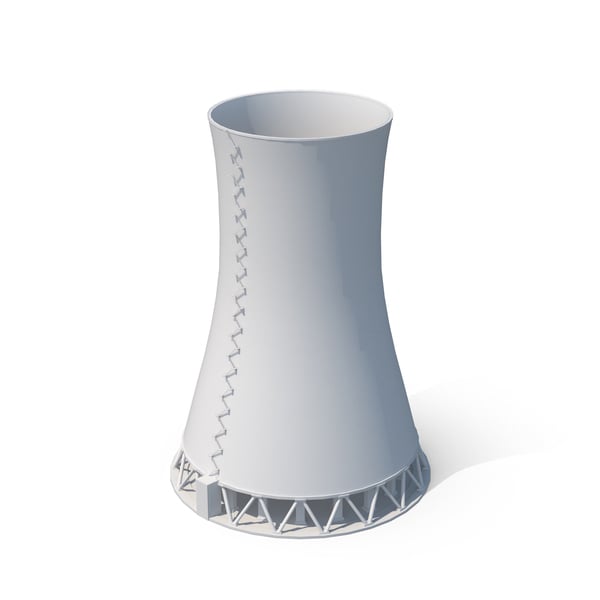
New Cooling Towers: Modern Solutions for Efficient Heat Rejection
As industries and commercial facilities expand and energy efficiency becomes a higher priority, the demand for reliable and high-performing cooling solutions continues to grow. At the heart of many HVAC systems and industrial processes is the new cooling towers—a heat rejection device that transfers excess heat from water-cooled systems into the atmosphere. While older systems may still function, investing in new cooling towers offers significant advantages in performance, energy savings, environmental compliance, and operational reliability.
This article explores the value of installing new cooling towers, the latest technologies and designs available, and key considerations for selecting the right system for your application.
Why Consider a New Cooling Tower?
Replacing an aging or inefficient cooling tower is not just about avoiding breakdowns—it's a strategic move that delivers a range of benefits:
- Improved energy efficiency: Newer models feature energy-efficient fans, motors, and controls that significantly reduce power consumption.
- Reduced maintenance: Advanced materials like corrosion-resistant plastics and stainless steel require less frequent repairs.
- Enhanced water savings: Modern cooling towers come with smarter water management, helping to reduce evaporation and blowdown losses.
- Regulatory compliance: Many local and federal regulations now require specific water treatment and emission standards. New systems are built with compliance in mind.
- Better system performance: When paired with updated HVAC or process cooling systems, new cooling towers help maintain optimal temperatures for equipment and processes.
Types of Cooling Towers
When planning a new installation, it’s important to understand the main types of cooling towers:
- Open-Circuit Cooling Towers (Wet Cooling Towers)
- These towers expose the process water directly to the atmosphere. The water is sprayed over a fill media and cooled by evaporation as air flows through the system.
- Pros: High heat rejection capacity, lower installation costs.
- Cons: Higher water consumption and potential for contamination.
- Closed-Circuit Cooling Towers (Fluid Coolers)
- These units keep process fluid enclosed in a coil while water sprays over the coil to provide evaporative cooling. The fluid never comes into contact with outside air.
- Pros: Reduced risk of contamination, lower maintenance.
- Cons: Higher upfront cost.
- Hybrid Cooling Towers
- Combining dry and wet cooling, hybrid systems use air cooling in mild weather and evaporative cooling in hot conditions. This approach helps save water.
- Pros: Water-efficient, adaptable to various climates.
- Cons: Higher complexity and installation cost.
- Dry Cooling Towers
- These operate without water, using ambient air to cool the process fluid via heat exchangers.
- Pros: No water use, minimal maintenance.
- Cons: Lower heat rejection efficiency, especially in hot climates.
Features of Modern Cooling Towers
When investing in a new cooling tower, look for these advanced features:
- High-Efficiency Fans and Motors
- New towers often come with variable frequency drive (VFD) motors and low-noise axial fans that offer precise control and quieter operation.
- Corrosion-Resistant Construction
- Many models use FRP (fiberglass-reinforced plastic), stainless steel, or HDPE (high-density polyethylene) to resist rust and corrosion, especially in coastal or chemical environments.
- Modular Design
- Modular cooling towers allow for easy expansion or replacement of sections without major disruptions. They're ideal for growing facilities.
- Smart Controls
- Integrated digital controllers, sensors, and remote monitoring allow for real-time performance tracking, alerts, and automation of fan speeds or water treatment.
- Advanced Drift Eliminators
- These reduce water droplets carried out of the system, conserving water and preventing scaling on surrounding structures.
- Eco-Friendly Fill Media
- Modern fill materials resist fouling and are designed for maximum air-water contact, increasing thermal efficiency.
Key Considerations When Choosing a New Cooling Tower
- Cooling Load Requirements
- Determine your system's heat rejection needs in BTU/hr or tons. Oversizing or undersizing can lead to performance and energy issues.
- Location and Climate
- Consider ambient temperatures, humidity, and local water availability. This affects whether wet, dry, or hybrid systems are more suitable.
- Water Quality
- If your area has poor water quality, a closed-loop or dry cooling system may be better to avoid fouling and scaling.
- Noise Restrictions
- If your facility is near residential areas or noise-sensitive zones, select models with low-sound fans and sound-attenuation packages.
- Maintenance Access
- Ensure the new tower design provides easy access to key components for inspection and cleaning.
- Footprint and Height
- Space limitations can dictate the type or size of tower you can install. Modular or low-profile designs may be necessary for urban settings.
- Budget and ROI
- While upfront costs vary, consider long-term savings from energy efficiency, water conservation, and reduced maintenance.
Installation and Commissioning
A successful cooling tower project depends not only on choosing the right equipment but also on proper installation:
- Site Preparation: Ensure solid foundations and drainage systems are in place.
- Piping and Electrical Connections: Align with manufacturer specs to avoid pressure losses or control failures.
- Testing and Balancing: Confirm proper airflow, water distribution, and performance during commissioning.
- Training: Provide training for staff to operate and maintain the system effectively.
Maintenance Tips for New Cooling Towers
Even new systems need regular care. Here's how to keep your investment running at peak performance:
- Inspect monthly for leaks, unusual noise, and biological growth.
- Clean the basin and strainers to remove debris.
- Monitor water quality and adjust chemical treatments as needed.
- Lubricate motors and gearboxes per manufacturer recommendations.
- Schedule annual performance reviews to catch issues early.
Conclusion
Investing in a new cooling tower is a smart move for facilities looking to boost energy efficiency, reduce water usage, and improve system reliability. With a wide range of types, materials, and technologies now available, modern cooling towers are engineered to meet the unique challenges of today’s industrial and commercial environments.
